Pharmacy recruits offered lucrative incentives
Pharmacists remain in short supply across the country, particularly in rural areas, according to the Bureau of Labor Statistics. With such a high demand, some retail and hospital pharmacies are offering signing bonuses and other incentives to recruit new pharmacists.
Pharmacists remain in short supply across the country, particularly in rural areas, according to the Bureau of Labor Statistics. With such a high demand, some retail and hospital pharmacies are offering signing bonuses and other incentives to recruit new pharmacists.
Competition among retail outlets and healthcare facilities is fierce, and the pay - salaries typically start around $120,000 - is high. To lure pharmacists, retailers are dangling incentives. For a while, one even put recruits behind the wheel of a BMW, according to newspaper reports.
Behind the shortage is an aging population in need of skilled advice and an increasing demand for pharmaceuticals that is only expected to accelerate in the years to come. Job growth - and competition - is also being driven by the expansion of retail giants such as Walgreens, Rite Aid, and CVS.
Though some pharmacy schools aimed at churning out more highly-trained professionals have popped up across the country, demand still outstrips diplomas. In Kaiser Permanente's Northern California region, 8 percent of its pharmacist jobs are vacant, Frank Hurtarte, the director of recruitment services for Kaiser facilities from the Bay Area to the foothills, said.
Kaiser has 154 pharmacies in the region and filled 24.6 million prescriptions last year, according to its Web site. Hurtarte said Kaiser Permanente advertises in journals, gives referral bonuses, and offers signing bonuses of as much as $20,000 While the struggling economy has caused drug sales to dip, experts say the long-term demand for pharmacists will continue. New pharmacy schools have opened in response to the high demand in the field. The United States now has 106, according to the American Association of Colleges of Pharmacy. Just seven years ago, the U.S. pharmacy graduates numbered 29 for every million people. Last year, the number rose to 33 graduates per million, according to Knapp and others.
Next spring, Touro is scheduled to grant degrees to 62 pharmacy students, its first class of graduates. In fact, enrollment at pharmacy schools has risen for seven straight years. In fall 2007, 3,956 full-time students were enrolled nationwide - barely enough to fill the 3,904 jobs vacant in January 2007 at retail pharmacies, according to the National Association of Chain Drug Stores.
To earn a doctor of pharmacy degree, students must undergo at least two years of undergraduate college course work followed by four academic years of professional study, according to the American Association of Colleges of Pharmacy's Web site.
"With a tremendous shortage of pharmacists, there are thousands of students trying to get in," said David Hawkins, dean of California Northstate College of Pharmacy in Rancho Cordova, which opened in August. Relying mostly on word of mouth, visits to area colleges and traffic to its recruitment Web site, Northstate received 350 applications for its inaugural class of 89 students.
"When people graduate from pharmacy schools, they tend to want to stick around where they graduated," Hawkins said. "Hospitals in our area tell us they're delighted we're here. We're here to generate some employees for them." Government agencies operating health facilities such as Sacramento County's Primary Care Center find competing for pharmacists difficult.
The center fills 1,800 prescriptions a day, but sometimes finds it hard to fill positions due to the competition.













